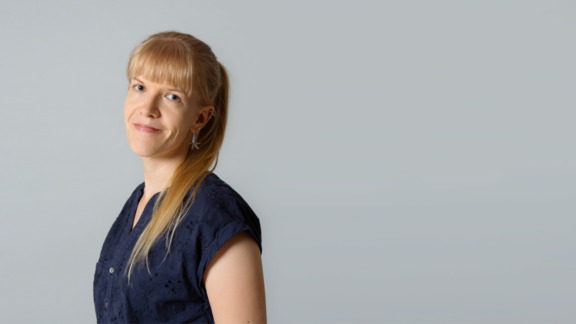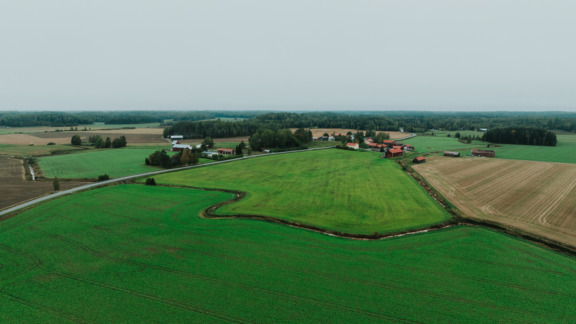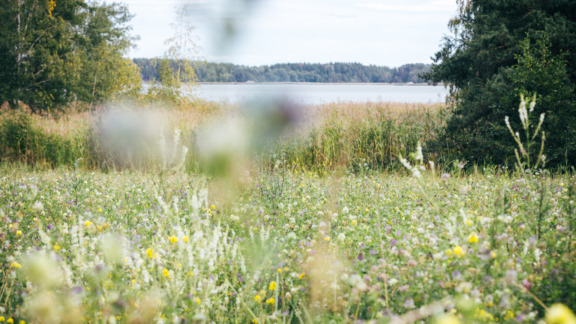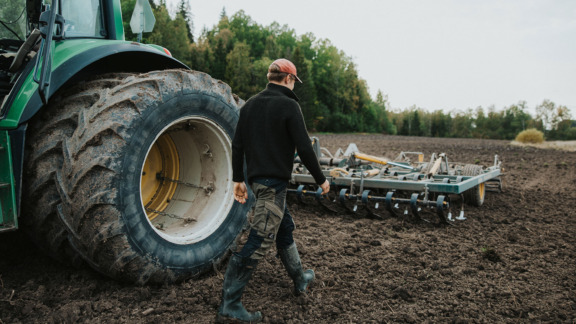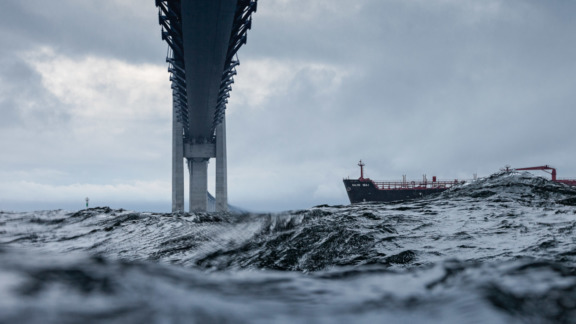Is Paludiculture a Solution to Organic Soil Emissions? Highlights from the Ruukki Field Day
Researchers, farmers, companies, and policy-makers came together at Ruukki research station on a warm and sunny day in August to learn about the agricultural management of peat soils and how to reduce their environmental impact. The focus of the day was on research, outreach, and politics. Elisa Vainio from the BSAG summarizes some of the lessons learned. You can find the taped presentations further down.
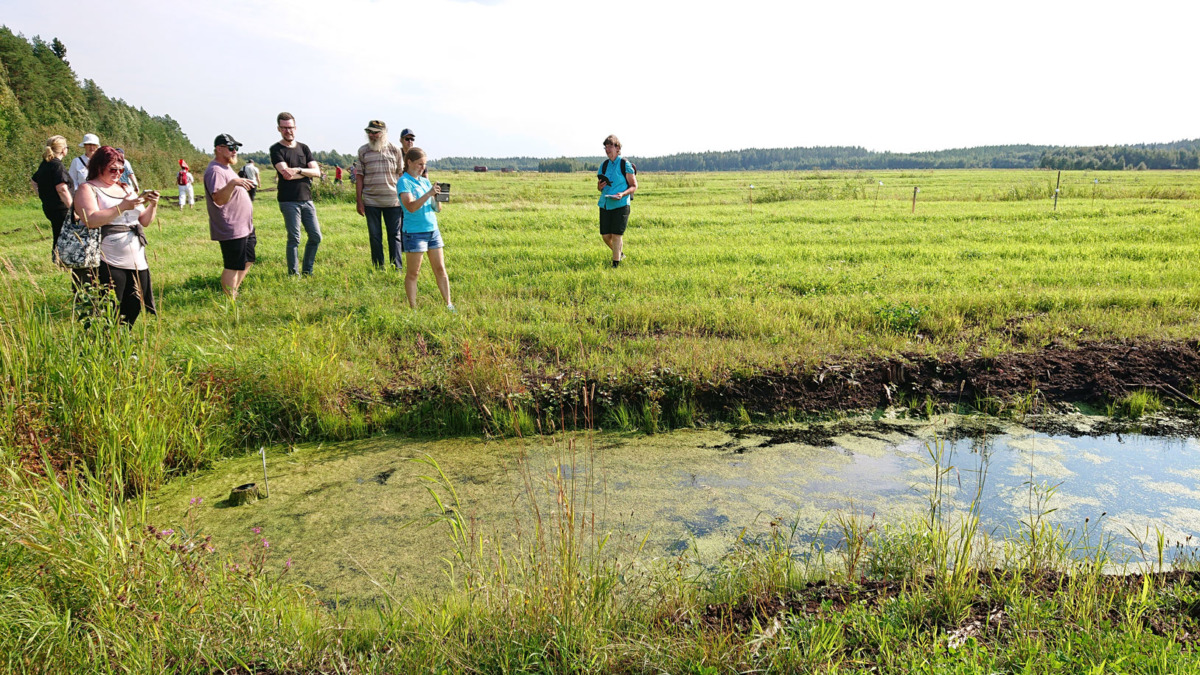
Ruukki station is part of the Natural Resources Institute Finland, and the research is focused on agricultural practices, species, and farming solutions on peat soils. Raisa Mäkipää, Research professor at the Natural Resources Institute Finland (Luke), highlighted the importance and topicality of the event. Raisa brought up the importance of agricultural soils in land use policy and reducing greenhouse gas emissions in Finland. Raisa reminded us that the carbon sink of forests declined so drastically that last year this sink did not compensate for cropland emissions, turning the Finnish land use sector into a net source of carbon for the first time.
In Finland, only 1% of soils used in agriculture and forestry are peat soils, but they are the source of most of the emissions from the land use sector. Thus, reducing emissions from peat soils really matters. Raisa stated that financial support to paludiculture could bring cost-effective emission reductions and that we need to change the support system.
When starting paludiculture, plant biomasses could be used on the same farm
Paludiculture means actively farmed fields where yield is collected, but where the water table level is kept high to avoid the decomposition of peat and carbon losses to the atmosphere.
Senior scientist Sanna Saarnio from Luke told us about the ongoing paludiculture research in Ruukki. Research is conducted on two experimental fields; they test reed canary grass on one (Phalaris arundinacea) and grass on the other.
Possible species for paludiculture are for example wetland hays, reed canary grass, the common reed (Phragmites australis), and reedmace (Typha). These are not grown for food, but can be used in many ways, for example as building materials, for biogas, and as a substitute for peat as bedding in animal production.
Sanna pointed out that since there are currently no markets for these plants or biomasses in Finland, at present the best solution for the farmers is to use the biomasses in their own farms or to sell to their neighbouring farms.
The farmer Rauno Haapala, together with Sanna Saarnio, told us about his experiences with the experiment. Rauno explained that before paludiculture, he cultivated organic oat, but the yields were constantly poor. Now the reed canary grass has been used as bedding for animals, and part of the biomass is composting for plant growing medium.
Farmers need support in the transition
Research scientist Arja Mustonen from Luke presented the results from seven pilot farms of OMAIHKA project on how to reduce greenhouse gas emissions. The greatest emissions per area were from pilot farms with a large field area of peat soil and a great proportion of those fields with annual crops. Most of the total emissions per farm originated from peat soils.
Both Arja and Sanna emphasized that farmers need both financial support and knowledge for starting paludiculture. Raising the water table level requires an understanding of the aims, and the structures need to be planned carefully to keep the water table level high. Financial support is needed for the costs in the beginning, and there needs to be a market and demand for paludiculture products.
So why to start paludiculture if there are not yet markets for the yield? Because it’s an effective way to reduce greenhouse gas emissions, and in peat soils, there’s a big potential for big emission reductions. In Ruukki, even though they have not managed to keep the water table at the target level, which is close to the peat surface, the decomposition of peat during summer has declined, as well as the emissions of methane and nitrous dioxide. In addition, Rauno told us that a brood of ducks is staying and eating in the ditches
Experiences of paludiculture from Denmark
Our international guest, assistant professor Martin Thorsøe from Aarhus University in Denmark, brought perspective on land use and soil health from the EU agricultural policy and specifically from Denmark. In Denmark, decisions have been made on substantial emission reductions for the agriculture and forestry sectors.
To achieve the goals, the aim is to rewet organic soils on a large scale by raising the water table level and beginning to practice paludiculture on said fields. Overall, soil is more and more in focus at the EU-level. Soil’s ability to offset greenhouse gas emissions has been recognized, which has led to significant investments in research on the topic.
In Denmark, organic soils are quite varied and do not only consist of peat soils. Some organic soils are highly productive croplands. Thus, there is no one solution for all organic soils in Denmark, which hampers political decision-making.
Based on Danish experiences, Martin concluded that the transition to paludiculture takes time and all stakeholders should be involved as early as possible. In political decisions, it would be critically important to find integrated solutions for multiple problems, rather than trying to solve one problem at a time, Martin concluded.
Collaboration and solutions with multiple benefits – these are also at the core of Carbon Action!
The event at Ruukki research station was co-organized by the Natural Resources Institute Finland (Luke) and the Baltic Sea Action Group (BSAG). The organizing was possible through the following projects: FIN SOIL ACTION and TURINA, funded by the ‘Catch the Carbon’ programme of the Ministry of Agriculture and Forestry of Finland, SOMPA and MULTA funded by the Strategic Research Council of the Academy of Finland, EU Life project CANEMURE, as well as OMAIHKA project.
CONTACT US
